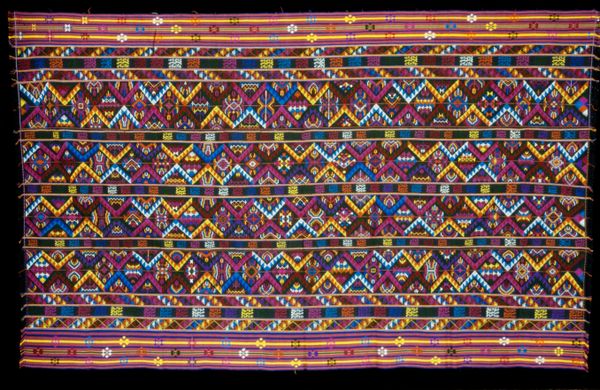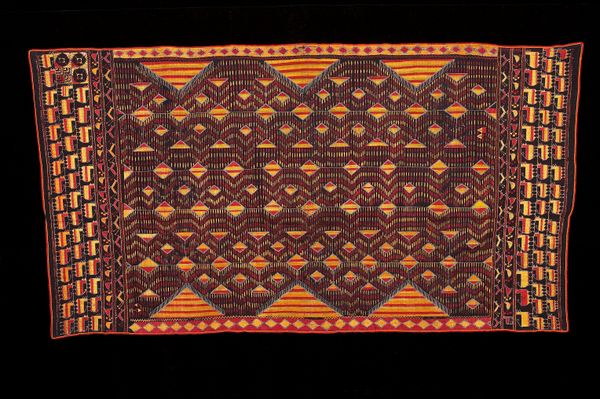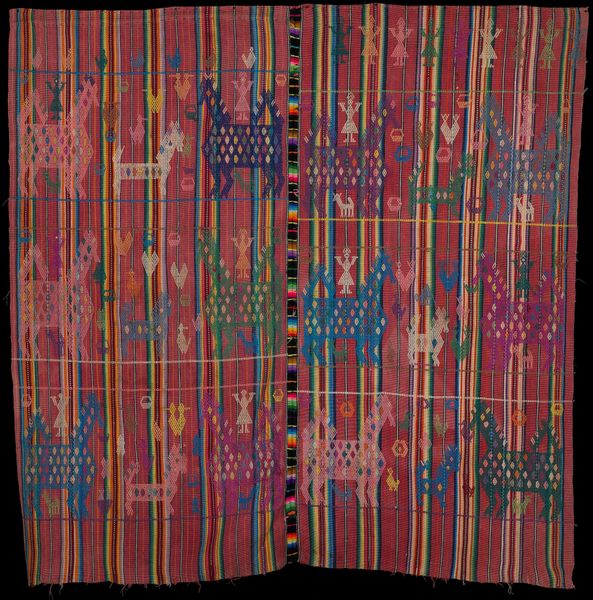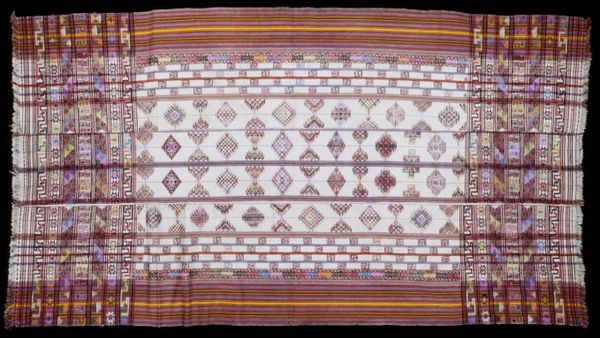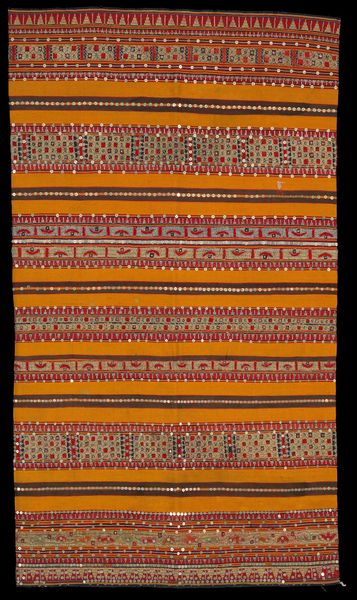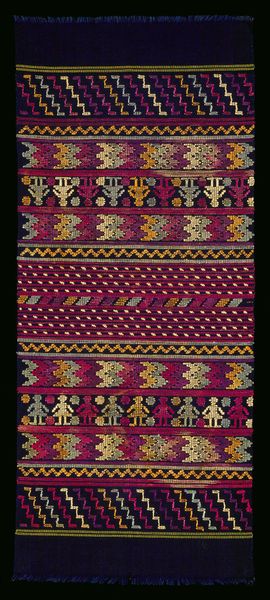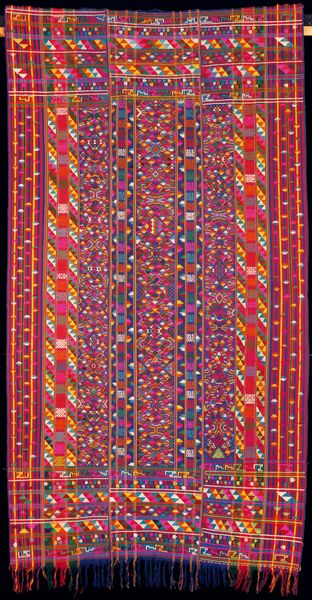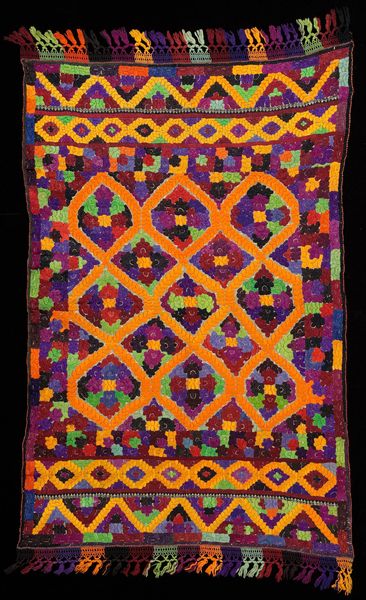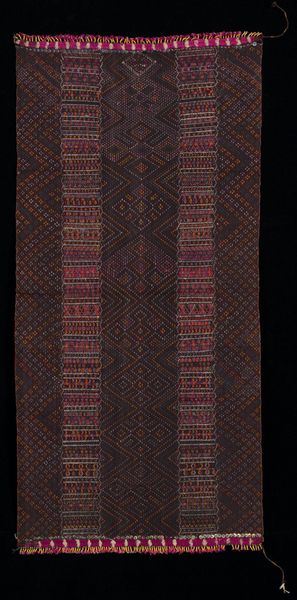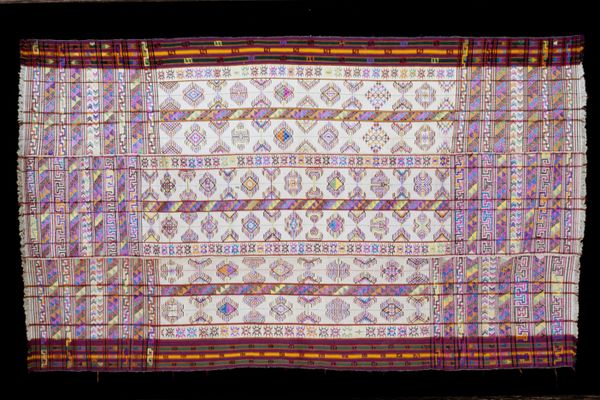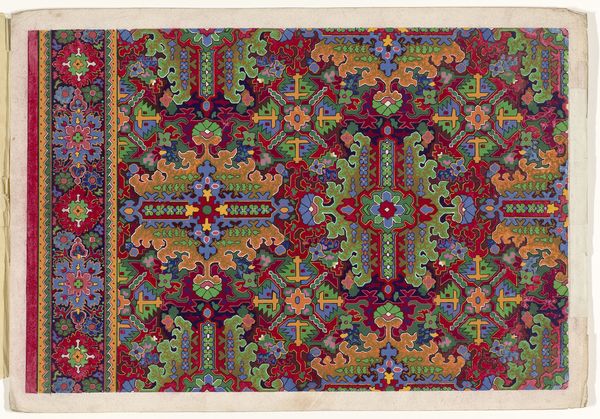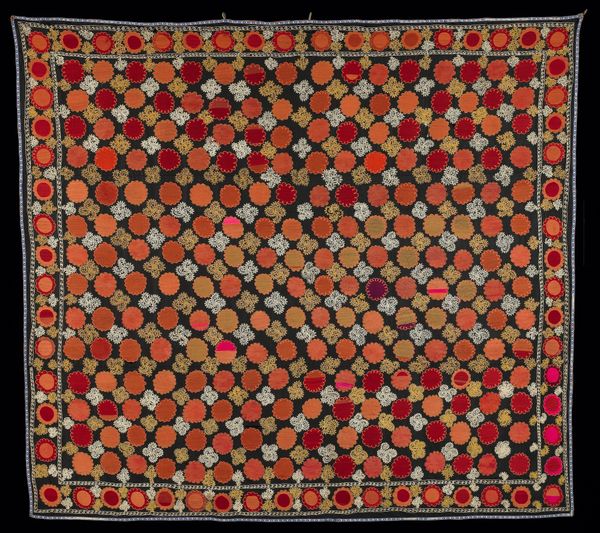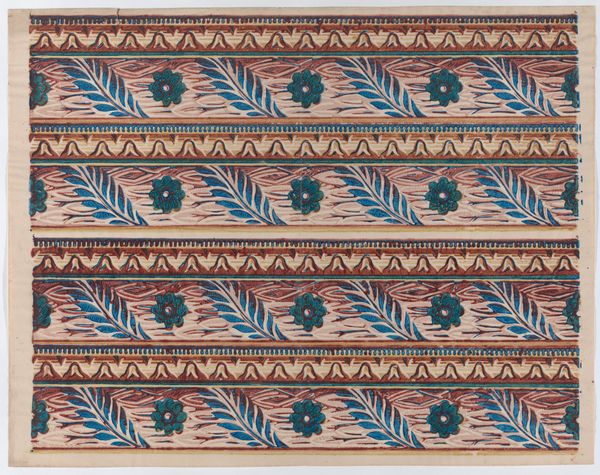
silk, textile, cotton
#
naturalistic pattern
#
silk
#
textile
#
geometric pattern
#
abstract pattern
#
organic pattern
#
repetition of pattern
#
intricate pattern
#
pattern repetition
#
cotton
#
layered pattern
#
funky pattern
#
combined pattern
Dimensions: 90 x 54 1/2 in. (228.6 x 138.4 cm)
Copyright: Public Domain
Curator: This work, titled "Kira," is a vibrant textile made from cotton and silk. It’s dated to around the 20th century and resides here at the Minneapolis Institute of Art. Editor: It strikes me as a visually busy piece. The colours are quite arresting and bold, and it seems to use a multitude of geometric shapes. How would you describe its composition? Curator: The composition is, as you observed, very intricate. It features layered and combined patterns arranged in horizontal registers. Given that this work likely comes from a tradition of textile production deeply embedded in cultural practice, how do these material choices – cotton and silk – reflect on the labor and means required for its creation? Editor: Considering silk and cotton, both demand considerable labor to process. It raises questions of access to materials. The skill necessary to weave something so detailed—were these materials reserved for elites or integrated differently in social production? Curator: That's a crucial point. We should consider the potential for this textile to function as a visual language, reflecting complex social hierarchies and possibly resistance to dominant powers. The intricate patterns might serve to encode histories or transmit cultural knowledge, particularly in contexts where other forms of expression are suppressed. Editor: So it becomes a space to negotiate those constraints? I'm thinking about who controls the raw materials, and also, what tools were used? Is the piece produced on an industrial loom or through a handcraft technique? It has serious bearing on how we situate it in the broader commodity landscape. Curator: Precisely. Whether it’s the product of industrial mass production or skilled handcraft deeply changes its cultural capital and meaning. This makes us reflect on how the intersections of identities–gender, class, ethnicity–shape access and expression through craft and design. Editor: This layering is very fascinating; thank you for guiding me through some new ways of interpreting the use and materials here! Curator: It was my pleasure. Reflecting on "Kira" allows us to remember the narratives interwoven within its threads, and the human experiences imbued within its making.
Comments
No comments
Be the first to comment and join the conversation on the ultimate creative platform.

